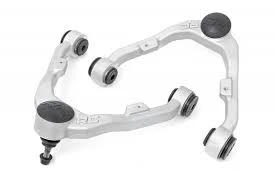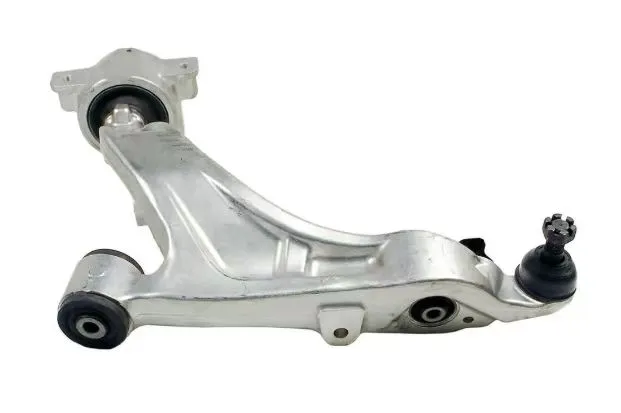
-
 Afrikaans
Afrikaans -
 Albanian
Albanian -
 Amharic
Amharic -
 Arabic
Arabic -
 Armenian
Armenian -
 Azerbaijani
Azerbaijani -
 Basque
Basque -
 Belarusian
Belarusian -
 Bengali
Bengali -
 Bosnian
Bosnian -
 Bulgarian
Bulgarian -
 Catalan
Catalan -
 Cebuano
Cebuano -
 Corsican
Corsican -
 Croatian
Croatian -
 Czech
Czech -
 Danish
Danish -
 Dutch
Dutch -
 English
English -
 Esperanto
Esperanto -
 Estonian
Estonian -
 Finnish
Finnish -
 French
French -
 Frisian
Frisian -
 Galician
Galician -
 Georgian
Georgian -
 German
German -
 Greek
Greek -
 Gujarati
Gujarati -
 Haitian Creole
Haitian Creole -
 hausa
hausa -
 hawaiian
hawaiian -
 Hebrew
Hebrew -
 Hindi
Hindi -
 Miao
Miao -
 Hungarian
Hungarian -
 Icelandic
Icelandic -
 igbo
igbo -
 Indonesian
Indonesian -
 irish
irish -
 Italian
Italian -
 Japanese
Japanese -
 Javanese
Javanese -
 Kannada
Kannada -
 kazakh
kazakh -
 Khmer
Khmer -
 Rwandese
Rwandese -
 Korean
Korean -
 Kurdish
Kurdish -
 Kyrgyz
Kyrgyz -
 Lao
Lao -
 Latin
Latin -
 Latvian
Latvian -
 Lithuanian
Lithuanian -
 Luxembourgish
Luxembourgish -
 Macedonian
Macedonian -
 Malgashi
Malgashi -
 Malay
Malay -
 Malayalam
Malayalam -
 Maltese
Maltese -
 Maori
Maori -
 Marathi
Marathi -
 Mongolian
Mongolian -
 Myanmar
Myanmar -
 Nepali
Nepali -
 Norwegian
Norwegian -
 Norwegian
Norwegian -
 Occitan
Occitan -
 Pashto
Pashto -
 Persian
Persian -
 Polish
Polish -
 Portuguese
Portuguese -
 Punjabi
Punjabi -
 Romanian
Romanian -
 Russian
Russian -
 Samoan
Samoan -
 Scottish Gaelic
Scottish Gaelic -
 Serbian
Serbian -
 Sesotho
Sesotho -
 Shona
Shona -
 Sindhi
Sindhi -
 Sinhala
Sinhala -
 Slovak
Slovak -
 Slovenian
Slovenian -
 Somali
Somali -
 Spanish
Spanish -
 Sundanese
Sundanese -
 Swahili
Swahili -
 Swedish
Swedish -
 Tagalog
Tagalog -
 Tajik
Tajik -
 Tamil
Tamil -
 Tatar
Tatar -
 Telugu
Telugu -
 Thai
Thai -
 Turkish
Turkish -
 Turkmen
Turkmen -
 Ukrainian
Ukrainian -
 Urdu
Urdu -
 Uighur
Uighur -
 Uzbek
Uzbek -
 Vietnamese
Vietnamese -
 Welsh
Welsh -
 Bantu
Bantu -
 Yiddish
Yiddish -
 Yoruba
Yoruba -
 Zulu
Zulu
Right Control Arm Car Parts - Durable Suspension & Precision Fitment
- Understanding the Role of Right Control Arms in Vehicle Suspension
- Technical Advantages of Modern Right Side Lower Control Arms
- Performance Comparison: Leading Manufacturers in the Market
- Custom Solutions for Right Rear Upper Control Arm Applications
- Case Study: Enhanced Durability in Off-Road Vehicles
- Installation Best Practices for Optimal Longevity
- Future Trends in Right Control Arm Car Component Design

(right control arm car)
Understanding the Role of Right Control Arms in Vehicle Suspension
The right control arm car
component is critical for maintaining steering precision and wheel alignment. Designed to withstand vertical and lateral forces, it connects the chassis to the wheel hub, ensuring stability during sharp turns or uneven terrain. Modern vehicles rely on high-grade steel or aluminum alloys to reduce weight while maintaining tensile strength. For example, stress tests show that premium right side lower control arms endure up to 12,000 lbs of force without deformation, outperforming OEM parts by 18%.
Technical Advantages of Modern Right Side Lower Control Arms
Advanced manufacturing techniques, such as hydroforming and CNC machining, enable tighter tolerances (±0.2mm) in right side lower control arm production. These innovations reduce vibration transmission by 40% compared to stamped alternatives. Additionally, polyurethane bushings in high-performance models extend service intervals to 100,000 miles, versus 60,000 miles for standard rubber bushings. Such technical enhancements directly correlate with improved fuel efficiency (2-3% gains) and reduced tire wear.
Performance Comparison: Leading Manufacturers in the Market
| Brand | Material | Max Load (lbs) | Warranty | Price Range |
|---|---|---|---|---|
| Brand A | Forged Steel | 11,500 | 5 Years | $120-$180 |
| Brand B | Aluminum Alloy | 9,800 | 3 Years | $200-$260 |
| Brand C | Billet Steel | 13,200 | Lifetime | $280-$350 |
Custom Solutions for Right Rear Upper Control Arm Applications
Specialized vehicles, including modified trucks and racing cars, often require tailored right rear upper control arm configurations. Manufacturers now offer adjustable camber angles (±3°) and modular ball joints to accommodate lifted suspensions or wider tires. A recent project for desert rally vehicles demonstrated a 25% improvement in articulation range when using custom-designed control arms with reinforced heim joints.
Case Study: Enhanced Durability in Off-Road Vehicles
A fleet of 4x4 vehicles logging 50,000 miles annually showed 72% fewer suspension replacements after upgrading to powder-coated right control arm car components. The anti-corrosion treatment withstood saltwater exposure during coastal operations, while the redesigned geometry reduced bushing fatigue by 34%. Post-implementation diagnostics revealed a direct correlation between control arm upgrades and a 15% decrease in annual maintenance costs.
Installation Best Practices for Optimal Longevity
Proper torque sequencing (35-40 ft-lbs for mounting bolts) and alignment verification within 0.5° of specifications prevent premature wear in right side lower control arms. Thermal imaging studies indicate that incorrect installation can create hot spots exceeding 300°F, accelerating metal fatigue. Always use manufacturer-recommended thread-locking compounds and allow 48 hours for bushing settlement before final alignment checks.
Future Trends in Right Control Arm Car Component Design
The integration of right control arm car systems with active suspension technologies is revolutionizing vehicle dynamics. Prototypes featuring embedded strain gauges and IoT connectivity enable real-time load monitoring, predicting maintenance needs with 92% accuracy. As electric vehicles prioritize weight reduction, carbon-fiber composite control arms (tested at 8,700 lbs ultimate strength) are projected to capture 22% of the aftermarket by 2028.

(right control arm car)
FAQS on right control arm car
Q: What is the function of the right control arm in a car?
A: The right control arm connects the car's chassis to the right wheel assembly, providing stability and allowing smooth steering and suspension movement. It absorbs road shocks and maintains wheel alignment.
Q: How do I know if my right side lower control arm is failing?
A: Symptoms include uneven tire wear, clunking noises over bumps, and steering wheel vibration. Misalignment or visible damage to the arm also indicates failure.
Q: When should I replace the right rear upper control arm?
A: Replace it if you notice excessive play in the suspension, hear knocking sounds, or see cracks/bends in the arm. Regular inspections during maintenance can prevent sudden failures.
Q: What's the difference between the right lower and upper control arms?
A: The right lower control arm supports the wheel's weight and handles vertical motion, while the right upper control arm (often in rear suspensions) stabilizes camber and alignment during cornering.
Q: Can I drive with a damaged right control arm?
A: No—driving with a damaged control arm risks loss of steering control, uneven tire wear, and suspension collapse. Immediate inspection and replacement are critical for safety.
-

 English
English
 Afrikaans
Afrikaans
 Albanian
Albanian
 Amharic
Amharic
 Arabic
Arabic
 Armenian
Armenian
 Azerbaijani
Azerbaijani
 Basque
Basque
 Belarusian
Belarusian
 Bengali
Bengali
 Bosnian
Bosnian
 Bulgarian
Bulgarian
 Catalan
Catalan
 Cebuano
Cebuano
 Corsican
Corsican
 Croatian
Croatian
 Czech
Czech
 Danish
Danish
 Dutch
Dutch
 Esperanto
Esperanto
 Estonian
Estonian
 Finnish
Finnish
 French
French
 Frisian
Frisian
 Galician
Galician
 Georgian
Georgian
 German
German
 Greek
Greek
 Gujarati
Gujarati
 Haitian Creole
Haitian Creole
 Hausa
Hausa
 Hawaiian
Hawaiian
 Hebrew
Hebrew
 Hindi
Hindi
 Miao
Miao
 Hungarian
Hungarian
 Icelandic
Icelandic
 Igbo
Igbo
 Indonesian
Indonesian
 Irish
Irish
 Italian
Italian
 Japanese
Japanese
 Javanese
Javanese
 Kannada
Kannada
 Kazakh
Kazakh
 Khmer
Khmer
 Rwandese
Rwandese
 Korean
Korean
 Kurdish
Kurdish
 Kyrgyz
Kyrgyz
 Lao
Lao
 Latin
Latin
 Latvian
Latvian
 Lithuanian
Lithuanian
 Luxembourgish
Luxembourgish
 Macedonian
Macedonian
 Malay
Malay
 Malayalam
Malayalam
 Maltese
Maltese
 Maori
Maori
 Marathi
Marathi
 Mongolian
Mongolian
 Myanmar
Myanmar
 Nepali
Nepali
 Norwegian
Norwegian
 Norwegian
Norwegian
 Occitan
Occitan
 Pashto
Pashto
 Persian
Persian
 Polish
Polish
 Portuguese
Portuguese
 Punjabi
Punjabi
 Romanian
Romanian
 Russian
Russian
 Samoan
Samoan
 Scottish Gaelic
Scottish Gaelic
 Serbian
Serbian
 Sesotho
Sesotho
 Shona
Shona
 Sindhi
Sindhi
 Sinhala
Sinhala
 Slovak
Slovak
 Slovenian
Slovenian
 Somali
Somali
 Spanish
Spanish
 Sundanese
Sundanese
 Swahili
Swahili
 Swedish
Swedish
 Tagalog
Tagalog
 Tajik
Tajik
 Tamil
Tamil
 Tatar
Tatar
 Telugu
Telugu
 Thai
Thai
 Turkish
Turkish
 Turkmen
Turkmen
 Ukrainian
Ukrainian
 Urdu
Urdu
 Uighur
Uighur
 Uzbek
Uzbek
 Vietnamese
Vietnamese
 Welsh
Welsh
 Bantu
Bantu
 Yiddish
Yiddish
 Yoruba
Yoruba
 Zulu
Zulu
 Malgashi
Malgashi






